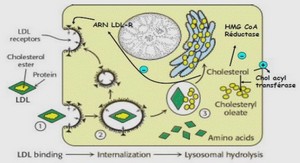Impact des radiations UV-C appliquées en pré-récolte sur la sensibilité du fraisier
Plant material
The Candiss cultivar was created by the Ciref (centre inter-régional de recherche et d’expérimentation de la fraise). This strawberry cultivar is a nonremontant plant with very aromatic fruits easily recognizable thanks to its very characteristic conical shape and marked golden achenes. This experiment was carried out twice: one in 2017 and another one in 2018. Strawberry plants (300 « trayplants », supplied by the Martaillac nursery, Sainte-Marthe, France) were placed in a greenhouse pot at the end of February 2017/2018 (INRA, Montfavet, France) in a mixture of substrate: 60 % compost of TS3 type (Code of Practice) with fine granulometry and 40 % of pine bark. Fertilization and irrigation were done daily by metering pumps and drip. All seedlings were randomized and were grown for 3 months (from planting to harvesting the first commercially mature fruits). The fruits were harvested at the beginning of May 2017/2018 when they reached the stage of commercial maturity.
UV-C treatments
The device used during treatments is an UV-C enclosure with a luminous ceiling with 9 UV-C lamps (DSP UV-C tube, OSRAM HNL, 24 W). The measurement of spectrum (by an UV sensor, OSI UV-20 TO-8 photodiode) confirmed a major peak at 254 nm. Four plants were processed at the same time in the box at a distance of 40 cm from the UV-C lamps. The dose rate was calculated with light intensity and exposure time. Light intensity measurements were performed with a radiometer positioned at 40 cm from the ceiling light. Chapitre III Impact des radiations UV-C sur la sensibilité du fraisier à différents pathogènes en cours de culture et impact sur la qualité/conservation des fruits en post-récolte 162 The UV-C dose selected was 1.70 kJ/m² (ie a treatment time of 4 min 08 sec). Strawberry plants were treated once a week. Several mode of application were tested: ‐ Before flowering “Av” (1 x 1.70 kJ/m² = 1.70 kJ/m²), ‐ After flowering “Ap” (5 x 1.70 kJ/m² = 8.50 kJ/m²), ‐ During all the growth “Pdt” (6 x 1.70 kJ/m² = 10.20 kJ/m²). Strawberry plants without any UV-C treatment were the control group “T”. There were 47 strawberry plants per modality. Following each irradiation, the treated plants were kept in the dark during 6 hours.
Chlorophylle a fluorescence
In order to characterize the impacts of UV-C treatments on photosystems, chlorophyll a fluorescence was measured and parameters of the OJIP method were calculated (Annexe 2; Sirbet and Govindge, 2011). The objective was to identify the frequency of application of UV-C that was not deleterious for the plant. The chlorophyll a fluorescence was measured each harvest day, with a fluorimeter (Pocket-PEA). All measurements were made every morning on nonsenescent and fully developed leaves. A highlight pulse (3000 μmol/m²/s) was sent on leaves after they underwent a dark adaptation for 30 min with clamps placed on the leaf limb. This period of dark adaptation allowed the electron acceptor of photosystem II (PSII) to be re-oxidized gradually until all of PSII reaction centers are able to redo photochemistry. This allows for the quantification of the flow of electrons that takes place in the photosynthetic machinery. Chapitre III Impact des radiations UV-C sur la sensibilité du fraisier à différents pathogènes en cours de culture et impact sur la qualité/conservation des fruits en post-récolte
Plant growth and production phase
In order to characterize the strawberry plant growth, the number of leaves before the first UV-C treatment (ie 15 days after planting the trayplants) and at harvest (after 8 weeks of growth) was counted at harvest, leaf area was also measured. For the fruit production phase, counting of buds, flowers and green/turning/mature fruits was carried out each week (from flowering to harvest day, which gives an enumeration of 6 consecutive weeks). These data gave information about the impact of UV-C treatments on flowering, on fruit production and on plant yield at harvest.
Fungus material and pathological tests on leaves and fruits
Botrytis cinerea (strain Bc1) was used in this study to artificially inoculate leaves and fruits. For pathological tests on leaves, strains were grown 3 days on PDA medium (Potato Dextrose Agar, 39 g/L, Sigma-Aldrich) and at 21°C (16 h of day and 8 h in dark). Mycelial plug of 0.5 cm diameter were used as inoculum and deposited on the central veins of leaves. Lesions are monitored for one week by taking pictures and measuring lesion areas with ImageJ software. The area under the disease progress curve (AUDPC) was calculated to determine the level of sensitivity of the strawberry plants. Fruits were inoculated by a spore suspension of Bc1 at 106 spores/mL. 10 μL was spot inoculated into wounds on the epidermal surface. The inoculated fruits were stored in plastic boxes at 21°C and 60 % of relative humidity. The disease development was estimated by counting the number of contaminated fruits and by taking pictures for 5 days after inoculation and calculated the fruit lesion area by using ImageJ software.



